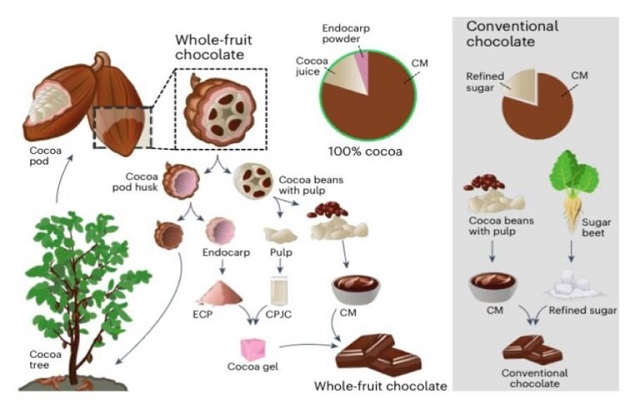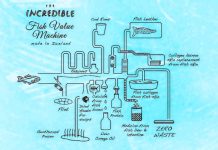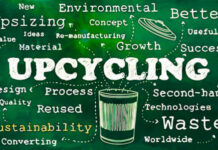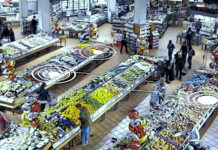Researchers at ETH Zurich have developed a revolutionary innovation in chocolate production – by upcycling the entire fruit of the cocoa plant, rather than just the beans, which account for about 25% of the cocoa – without the need for added sugar. (1) An in-depth look.
1) Swiss chocolate, tradition and innovation
The innovation of the Swiss Federal Institute of Technology in Zurich follows the course of a tradition in which Switzerland has always distinguished itself in research into the production of chocolate and cocoa derivatives.
Already in the 1879 Rudolf Lindt – inventor, as well as founder of the eponymous industry – discovered how to give chocolate a smooth and homogeneous consistency, through the continuous stirring of the cocoa mass at high temperature. And it was precisely this technique that earned the factory a generous remuneration, sold together with the brand to the competitor Sprüngli, 20 years later.
The research under examination (Mishra et al., 2024) has in turn already attracted the interest of historic industries, such as Lindt & Sprüngli itself and La Bonbonnière Chocolaterie (1821). From Zurich to Geneva, passing through Ghana.
2) Cocoa, the natural sweetness of the juice
Natural sweetness of the cocoa juice, which contains 14% sugar and has a slightly acidic, fruity flavor, is the key to the innovation launched by Kim Mishra, the coordinator of the research group at ETH Zurich, the Swiss Federal Institute of Technology in Zurich.
The juice is concentrated and mixed with both the pulp and the dried and ground endocarp, which is rich in pectin, to make a cocoa gel.
The gel naturally sweet – as well as, assumed to be a source of dietary fibre and bioactive substances – is added (at <20% wt) to the cocoa mass. And it is thus possible to produce a chocolate without the added sugars that EFSA recommends to exclude from the diet, or reduce to a minimum. (2)
3) Circular economy
After almost 200 years since the production of the first solid chocolate bar (JS Fry and Sons, UK, 1830), Kim Mishra has found a way to use the 75% of the cocoa bean that has so far been wasted, even though it is rich in nutrients and fibre.
The circular economy made by upcycling the pulp, endocarp and peel, it can therefore allow for:
-reduce a ‘food loss’ whose quantity is at least equal to that of the beans currently processed, considering only the pulp (25% of the fruit)
-increase production yields and thus reduce the demand for new cocoa plantations, which often involve the deforestation of primary forests. (3)
4) Value chain
The production of chocolate from whole fruit also allows you to:
-recognize cocoa collectors a higher compensation, thanks to the price recognized for the sale of the pulp, and
-localize the primary transformation phase in the countries of origin of the raw material. Thus, in perspective
-promote the redistribution of value in low-income countries where cocoa is grown and the dignity of the income of the farmers and workers involved.
5) Social sustainability, the example of KOA
KOA – the Zurich-based B-company startup that was the first to follow Kim Mishra’s research – has started extracting cocoa juice in Ghana, using mobile plants, and pasteurizing it in a local factory.
Its founders have managed to create almost a hundred jobs in a short time. And above all to guarantee the pickers an additional compensation that can help reduce the scourge of child labor in the cocoa supply chain.
5.1) Fair price, payment terms, blockchain
The example of KOA deserves attention in all agri-food chains wherever based, under various aspects:
-#fairprice. The additional compensation recognized to farmers, in US$/t, is higher than both that recognized by Fairtrade International (+25%), and that certified by Rainforest Alliance (+339%. See figure 1)

Figure 1 – additional price recognized by KOA to cocoa collectors (5)
–payment terms. Collectors receive payments instantly upon delivery of each individual payment. How would this be so useful in Europe too (6)
-blockchain. Deliveries and payments are recorded in real time with blockchain technology, thanks to the synergy with the local telecommunications operator MTN. (5)
Supply chain traceability, fair trade practices, worker protection (including union and social security protection, in perspective), tax transparency. Everything that is missing everywhere else in the world, or almost. (7)
6) Future prospects
The work carried out by Mishra et al. appears truly valuable, also in view of an ‘exploitation’ starting from West Africa (Ghana and Ivory Coast) where approximately 80% of cocoa production takes place.
The impact of this innovation, on the global market of cocoa and products derived from it, can be extraordinary under the various aspects mentioned above, to which are added two possible benefits for the consumers of the planet:
-nutritional security. Innovative chocolate has a nutritional profile that is definitely better than traditional chocolate, just because it doesn’t contain added sugars.
-possible health benefits. Further studies may be conducted to evaluate the possible health benefits associated with the consumption of the new product, thanks to the fibres and various bioactive compounds.
-accessibility. The ‘superfood’, beyond the gourmet products in the premium segment, could allow the availability of chocolate at affordable prices, thanks to the greater availability of raw materials at the same levels of yields in agriculture.
7) Novel Food Regulation
Placing on the EU market of chocolate from the whole cocoa bean single European Union requires the application of the Novel Foods Regulation (EU) 2015/2283. At present:
-sugars obtained from the concentrated pulp of Theobroma cacao L. by drying – or by purification to obtain high purity glucose and fructose – have been authorised as novel foods in the EU, since 14.2.20, thanks to the dossiers submitted by Nestec York Ltd and Cabosse Naturals NV (8)
-the concentrated pulp of Theobroma cacao L. has also been recognised in the EU as a traditional food, therefore not subject to the obligation of prior authorisation as a novel food (9)
– the use of other parts of the fruit (i.e. endocarp, peel) as food ingredients requires the submission of new dossiers, for the purposes of authorisation as novel food which must precede the marketing in the EU of foods containing them.
The authorisation procedure could be simplified if applicants are able to demonstrate a history of use of the abovementioned raw materials in third countries, even through grey literature. (10)
8) Industry regulations
The designation of the new product as ‘chocolate’ – as indeed it deserves, in light of technological innovation – will also require an update of the sector standards applied to cocoa and chocolate products intended for human consumption. Namely:
-at international level, Codex Alimentarius Standards for (i) Chocolate and Chocolate Products, (ii) Cocoa (Cocoa) Mass (Cocoa/Chocolate Liquor) and Cocoa Cake, (iii) Cocoa powders (cocoas) and dry mixtures of cocoa and sugars (11)
-in the EU, Cocoa and Chocolate Products Directive 2000/36/EC. (12)
9) Food safety and agronomic practices
A possible criticality – and at the same time a great opportunity – is linked to the agronomic practices adopted in the cultivation of cocoa. The upcycling of waste from agri-food chains, as has already been shared, is the main road of food innovation in our times. (13,14).
The use of the outer parts of the fruit, starting from the peel and endocarp, can however increase the exposure of consumers to pesticides and other plant protection products, with possible risks for food safety and public health. As has been seen, for example, in the case of bananas. (15)
Attention to these aspects should therefore encourage operators to convert their crops to the organic system. Even more so considering the additional advantages of organic products for health and the immune system. (16)
Dario Dongo
Legend: Imagine cover by Mishra, K., Green, A., Burkard, J. et al. Valorization of cocoa pod side streams improves nutritional and sustainability aspects of chocolate. Nat Food 5, 423–432 (2024). https://doi.org/10.1038/s43016-024-00967-2
Footnotes
(1) Mishra, Kim; Green, Ashley; Burkard, Johannes; Gubler, Irina; Borradori, Roberta; Kohler, Lucas; Meuli, Johannes; Krähenmann, Ursina; Bergfreund, Jotam; Siegrist, Armin; Schnyder, Mary; Mathys, Alexander; Fischer, Peter; Windhab, Erich. (2024). Valorization of cocoa pod side streams improves nutritional and sustainability aspects of chocolate. Nature Food. 5. 1-10. doi: 10.1038/s43016-024-00967-2
(2) Marta Strinati. The harmful role of sugars in the diet, EFSA opinion. GIFT (Great Italian Food Trade). 1.3.22
(3) KOA (Switzerland), KOA Impact (Ghana) https://koa-impact.com/team/
(4) Dario Dongo. Child abuse in cocoa, class action in USA. GIFT (Great Italian Food Trade). 6.1.24
(5) KOA. Impact. Radical transparency https://tinyurl.com/3m2u7a6p
(6) Dario Dongo. Goodbye Italian Fruit. The Crisis, and the Solution. GIFT (Great Italian Food Trade). 17.4.24
(7) The benefits of using blockchain for farmers and land workers have been illustrated in a FAO report (2018), as well as in two subsequent scientific studies conducted in India and China. See notes 1,12,13 in the article by Dario Dongo, Andrea Adelmo Della Penna. Blockchain, the opportunities for the agri-food and organic supply chains. GIFT (Great Italian Food Trade).
(8) Commission Implementing Regulation (EU) 2020/1634 of 4 November 2020 authorizing the placing on the market of sugars obtained from cocoa (Theobroma cacao L.) pulp as a novel food under Regulation (EU) 2015/2283 https://tinyurl.com/3r4mvua8
(9) Reg. (EU) No 2020/1634, whereas 7
(10) Dario Dongo. Notification of traditional foods from third countries as Novel Foods in the EU. GIFT (Great Italian Food Trade). 4.3.22
(11) Codex Committee on Cocoa Products and Chocolate (CCCPC) https://tinyurl.com/nxu8a7hx
(12) Directive 2000/36/EC of the European Parliament and of the Council relating to cocoa and chocolate products intended for human consumption. Latest consolidated text 18.11.23 https://tinyurl.com/yc7a2sj7
(13) Dario Dongo. Upcycling, the main road to research and innovation. GIFT (Great Italian Food Trade). 1.1.2023
(14) Dario Dongo, Andrea Adelmo Della Penna. Upcycling of co-products and food waste, a brief scientific review. GIFT (Great Italian Food Trade). 12.1.24
(15) Marta Strinati, Dario Dongo. Pesticides in banana pulp, organic is always safe. The K-Tipp test. GIFT (Great Italian Food Trade). 15.9.20
(16) Dario Dongo, Andrea Adelmo Della Penna. Organic food and the immune system, scientific evidence. GIFT (Great Italian Food Trade). 11.4.20
Dario Dongo, lawyer and journalist, PhD in international food law, founder of WIISE (FARE - GIFT - Food Times) and Égalité.








